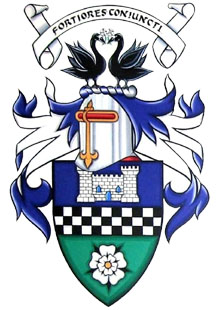Lordship of Wilmington facts for kids
Wilmington is a historic area in Sellindge, Kent, England. It's known for being a very old "manor" or "lordship." A manor was like a large estate with land and a big house. The title "Lord of Wilmington" or "Lady of Wilmington" goes with this historic place.
Wilmington is special because it has some of the oldest surviving documents from the Anglo-Saxons. These documents are called "charters." They help us see how the name of this place changed a lot over time. There is another place called Wilmington in Kent, but it is a much bigger town near Dartford.
Contents
The First Grant of Land
In the year 700 C.E., Wihtred, who was the King of Kent, gave some land to the Church of St. Mary at Lyminge. This land was about four "ploughlands." A ploughland was an old way to measure land. It was roughly how much land a team of oxen could plough in a year.
An early copy of this land grant, or charter, was made in the early 700s. Later, in the 800s, people added notes to both copies. These notes helped explain the changes to the place's name.
Wilmington's Original Name
In 700 C.E., the land was called Pleghelmestun. This name meant 'the farm or village of Pleghelm'. It was located between three well-known boundaries: Bereueg, Meguines paeth, and Stretleg.
This original charter also included land for grazing 300 sheep. This sheep land was at a place called Rumining seta in Romney Marsh. This shows that even very old documents connect land in the hills with land in the marsh. This marshland was likely part of what is now Dymchurch.
How Wilmington's Name Changed
People added notes to the first charter in the 800s. These notes helped explain the new name for the land.
Notes on the First Charter
One person wrote the words daes landes boc aet berwicum on the charter. This means 'the land-book (or charter) at Berwick'. Berwick was the name of the neighboring estate to the east.
Another writer from the same time added the words nunc wigelmignctun. This means 'now Wighelm's tun'. So, by the 800s, the estate had a new name: Wi(g)lmington.
Changes to the Second Charter
Another copy of the land grant was also changed by a writer in the 800s. On this copy, the first two letters of Pleghelmestun were crossed out. They were replaced with "qi," which was an old way to spell "Wi." This made the name Wieghelmestun. This change tried to connect the older name with the newer one. It showed that the 'tun' (farm or village) now belonged to 'Wieghelm'.
The Lord or Lady of Wilmington
The title "Lord of Wilmington" or "Lady of Wilmington" is a shorter way to say "Lord of the Manor of Wilmington." This title belongs to the person who holds the lordship of this historic manor.
Two old manors were once part of the larger Sellindge manor:
- Wilmington: This manor lost its physical buildings and land when it came under the same owner as the Sellindge manor itself.
- Somerfield: This manor also lost its physical parts, but it can still be identified with Somerfield Court Farm.
Even after these manors were owned by the same person, their transfers were still recorded separately. Special courts, called "Courts Baron," were held for each manor.
As of April 2014, the title of Lord of the Manor of Wilmington is held by Mark Lindley-Highfield of Ballumbie Castle. He became the lord of this manor on November 23, 2011.


